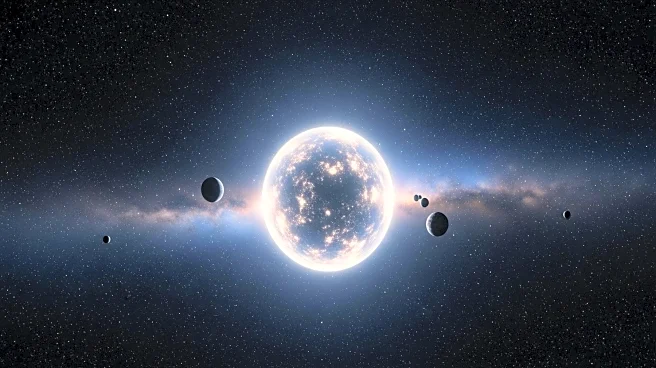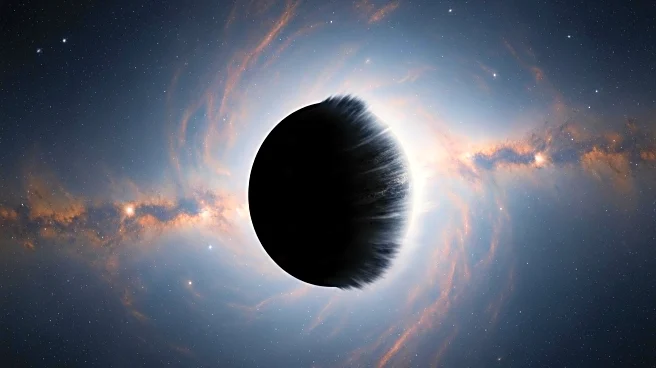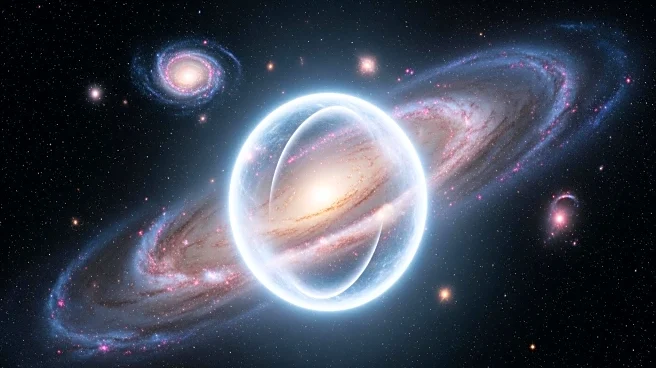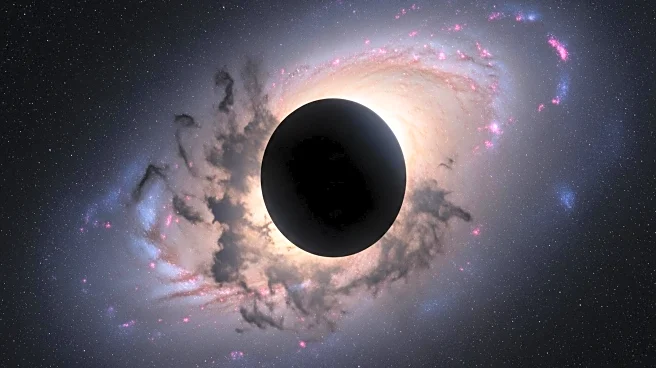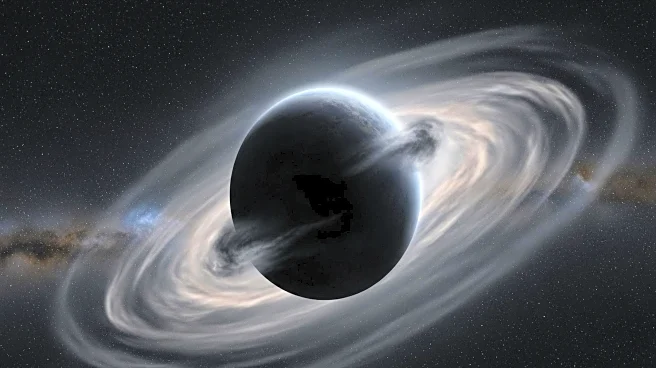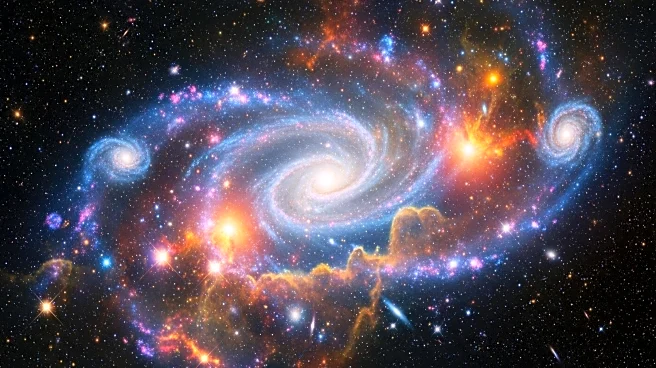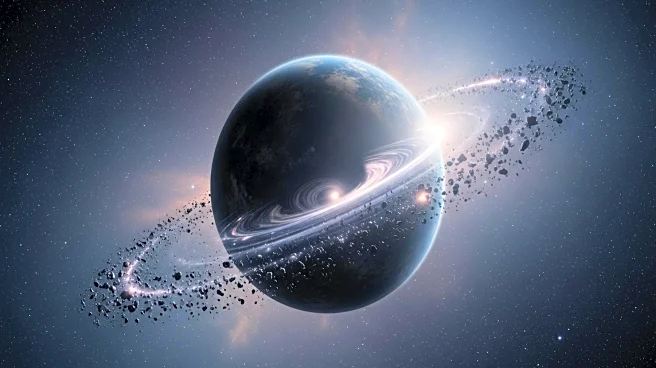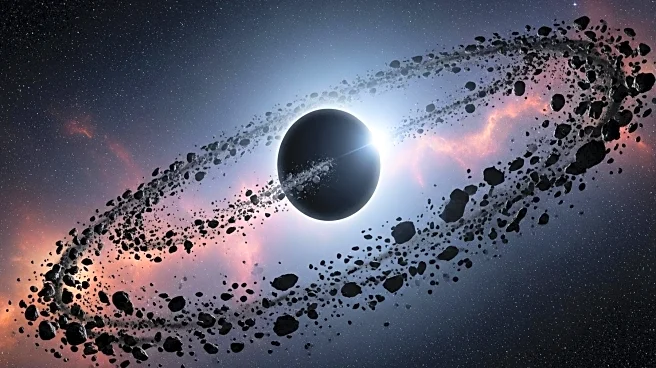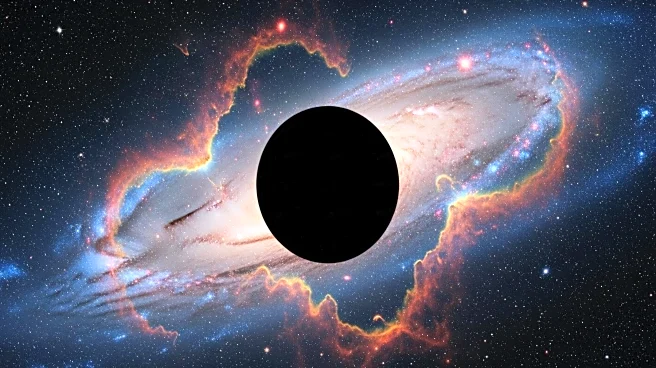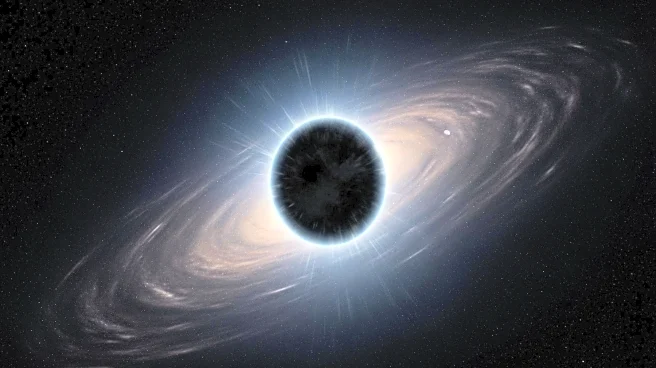What's Happening?
A rogue planet, named Cha 1107-7626, located approximately 620 light-years away in the Chameleon constellation, is consuming surrounding gas and dust at an unprecedented rate of 6 billion tons per second. This discovery was made using the European Southern Observatory's Very Large Telescope. The planet is in its early formation stage, feeding off a disc of material left from its formation. The study, published in The Astrophysical Journal Letters, highlights the strongest growth rate ever observed in a planetary body. The planet's mass is estimated to be five to ten times that of Jupiter, and its rapid growth may be linked to its magnetic activity.
Why It's Important?
This discovery challenges existing notions about planetary formation and behavior, showing that rogue planets can exhibit star-like characteristics. The rapid accretion rate and the presence of water vapor during the process suggest that even planetary-mass objects can have strong magnetic fields influencing their growth. This finding could reshape understanding of planetary formation and the conditions that allow for such rapid growth, providing new insights into the diversity of planetary systems in the universe.
What's Next?
Further observations and studies are needed to understand the mechanisms driving the planet's rapid growth and the role of its magnetic activity. Researchers aim to explore the chemical changes in the disc surrounding the planet and investigate whether similar processes occur in other rogue planets. This research could lead to broader implications for the study of planetary formation and the potential for life on other planets.

